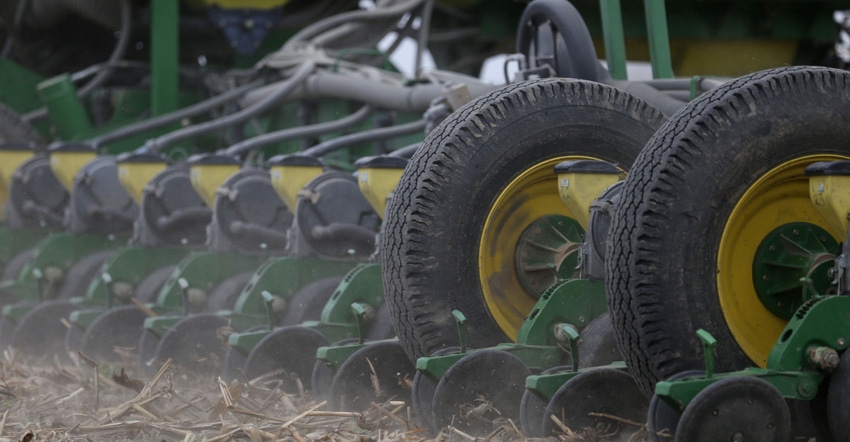
How do you decide how deep to plant corn or soybeans? Tradition? Suggestions from your seed or machinery rep? Review of past seasons’ practices and results?
There’s no input cost associated with your decision, yet the outcome is significant.
“Planting depth is a decision we can make that has a big impact on our final outcome,” says Nate Firle, owner of AgRevival, an agronomic research company in Gibbon, Minn.

Firle, also an independent research cooperator and regional agronomy manager with Beck’s Practical Farm Research, has been evaluating planting conditions and data in multiyear, multilocation studies. Researchers looked at planting corn at 1-, 1.5-, 2-, 2.5- and 3-inch depths. They planted soybeans at half-inch, 1-, 1.5-, 2- and 2.5-inch depths. Yields averaged the highest at nearly 208 bushels of corn per acre when planted at 2 inches. Soybeans yielded nearly 71 bushels per acre when planted at 1.5 inches.
At Beck’s Minnesota Field Show at his company research site in summer 2021, Firle offered a five-point list of factors to consider when making planting depth decisions.
1. Soil moisture. Water is needed to get seed germination started and for emergence. In corn, 30% of a kernel’s weight in water needs to be absorbed for embryo growth. In soybeans, half of a seed’s weight in water is needed. Consistent, adequate moisture is key. Firle experimented with Precision Planting’s SmartFirmer, a sensor that identifies soil moisture and temperature in real time, allowing you to adjust seed depth as needed. The sensors confirmed 30% moisture as the best to plant in.
2. Soil temperature. Soil temperature can fluctuate throughout the day in the top inch of soil, while deeper soil temps are more consistent. Kernels placed in fluctuating soil temps are more at risk for injury than those placed deeper.
Spring planting in 2021 offered an example of the benefit of planting deeper. Firle said they planted on April 6, and then it snowed. By April 29, plants had not yet emerged. Both corn and soybeans emerged on May 5. Soybeans were planted at a 2-inch depth; corn, 2.5 inches. “The seed sat in the ground almost a month,” he noted.
A soil temperature consistent around 50 degrees F is needed for germination and soil biology.
3. Crop development. Crop development is the most important reason to plant at the proper depth. In corn, a planting depth of 2 inches or more allows nodal roots to develop below the soil surface. Nodal roots provide structural support and are responsible for most of the water and nutrients the plant needs. Five sets of nodal roots are optimal for maximizing potential, Firle added.
In soybeans, nodulation occurs at or below planting depth. Nodules and their symbiotic relationship with soil biology are most efficient at consistent temperatures around 72 degrees. Planting at 1.5 inches or more places future nodules at the depth where soil biology is most active.
4. Soil conditions. Soil conditions like fluffy soil, heavy residue cover or hard surface crusting impact the performance of equipment designed to place seed consistently. Fluffy soils causing gauge wheels to drag and row cleaners set too aggressively are the two most common soil condition problems Firle said he sees. Also, in fluffy soils after a rain, seed planting depth could have lost half an inch, due to compressing soil.
Soil type, tillage practice and downforce settings are just a few factors to consider regarding planting depth, and all vary from farm to farm, field to field. Know your equipment, and set the depth needed for optimal performance.
5. Postplanting considerations. Weather events, such as cold rain or snow, change soil temperature or cause soils to crust. Mechanical rolling and heavy rains can compress topsoil, affecting seed depth.
Cultivating or hilling also can affect the depth where plant development takes place.
To view a YouTube presentation by Firle on this topic, visit youtube.com/watch?v=41xUGJ1dK4g&t=8295s.
About the Author(s)
You May Also Like






